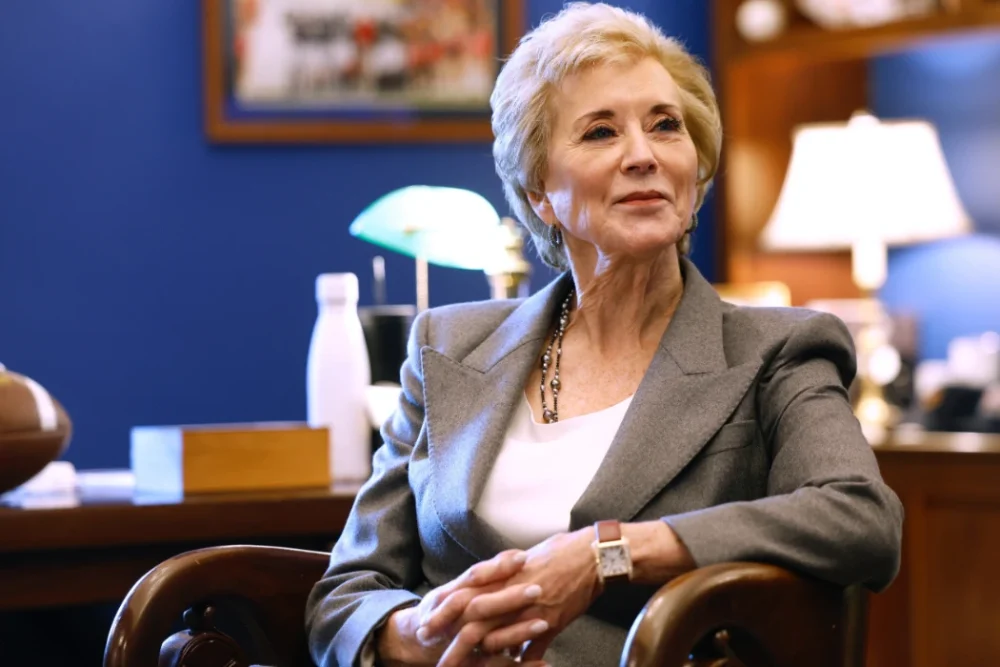When the U.S. Department of Education announces new priorities, we pay attention because we know firsthand how policy decisions in Washington ripple through our classrooms, shape our children’s futures, and impact the resources available to our neighborhoods.
On Tuesday, Education Secretary Linda McMahon announced a new slate of federal grant priorities, marking a dramatic shift in the status quo. Gone are the Biden-era initiatives, which focused on diversity, equity, and inclusion. In their place: expanded school choice, increased state control, and a renewed emphasis on literacy.
“We are centering meaningful learning and expanding choice, not divisive ideologies,” McMahon said during the announcement. And just like that, the language changed. But as parents, educators, and advocates in low-income communities, we’re left asking: Who really benefits from this new agenda, and who gets left behind?
Let’s talk about school choice. On paper, it sounds like a win: more options for parents, more flexibility, and a promise of better educational outcomes. But we’ve seen the other side. We’ve watched charter schools pop up in our communities without guaranteeing access to our kids (Some are creating equity issues with public school students). We’ve seen how selective admissions policies, transportation issues, and lack of accommodations for special education students create barriers dressed up as “options.”
The Department’s proposal to pump an additional $60 million into charter school expansion may excite investors and policy nerds, but for families on the ground, it often just feels like traditional public schools, which continue to get picked apart like junk cars, with programs and resources snatched up to build up charter schools that don’t even take all our kids.
One of the few silver linings in this announcement is the emphasis on improving literacy, mainly through what’s called “evidence-based instruction.” That’s paramount. We know literacy is a gateway; kids who can’t read by third grade are four times more likely to drop out of high school. And in many of our districts, reading scores are falling, while access to trained reading specialists or high-quality curricula is limited.
But let’s be real here: A literacy agenda without funding is just lip service. Will these competitive grants actually reach our schools, the ones already under-resourced, understaffed, and stretched thin? Or will they favor districts with the infrastructure and grant-writing expertise to apply?
Another major shift in the Department’s plan is the push for more state control and less federal oversight. This might sound good on a press release. But we’ve seen what happens when states are left to their own devices. Some of us live in states that fight tooth and nail to restrict what’s taught about race, gender, and history. Others have watched their local school boards become battlegrounds for political agendas. Without federal guardrails, how do we ensure that our kids, regardless of zip code, have access to the same quality education? This is a dangerous course. And when the most vulnerable students, low-income, disabled, multilingual learners, lose protections, we all lose.
One point of clarification: These changes only apply to competitive grants, which make up a small fraction of the Department’s budget. The largest funding streams, like Title I for low-income students and IDEA for students with disabilities, are formula-based and remain untouched, at least for now. Today, they are discretionary grants. Tomorrow, it could be something more.
As a community, we can’t afford to sit this one out. The public has 30 days to comment on these proposed priorities. That means now is our time to respond, not just with concern but with clarity.
We need to tell the Department of Education what real learning looks like in our schools. We must demand equitable funding, culturally relevant instruction, and wraparound services that meet our kids where they are. We must remind them that our children are not data points or talking points. They are the future, and their education deserves more than a policy pivot.
We urge every parent, teacher, and advocate in our network to speak up. If you care about literacy, if you care about equity, if you care about making sure federal dollars reach the schools that need them most, now is the time.
Share with us if you see something powerful happening in your school, neighborhood, or district. Email us at [email protected]. We are amplifying the stories that matter because we know that behind every policy, there are people. Behind every change, there are children.
Let’s make sure they’re not forgotten.





